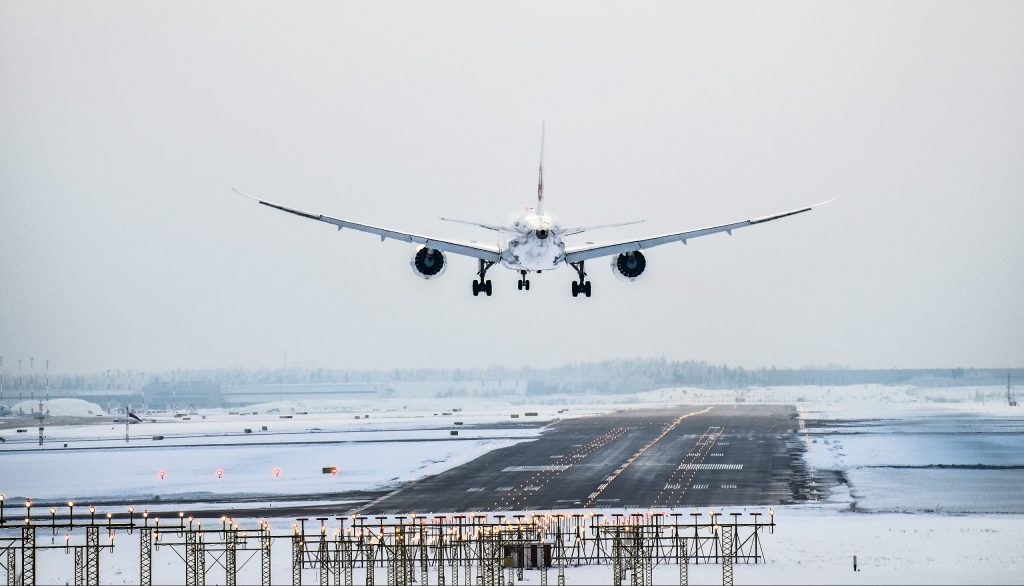Despite the challenges brought about by the current crisis, runway safety remains one of ICAO’s top priorities. Although there has been a severe reduction in air traffic, runway incursions and excursions continue to occur. Some risks might even have increased due to changes in runway and taxiway utilization, different surface traffic patterns and more ‘continuous descent approaches.
As we begin to emerge from the crisis, aviation needs to rebuild confidence both in itself as well as amongst the traveling public. Though the main challenges are directly associated with the COVID virus, such as quarantine regulations, ensuring the safety of aircraft operations, including runway safety, remains an important cornerstone of our industry. It, therefore, contributes to this much-needed confidence.
The Global Reporting Format (GRF) for assessing and reporting runway surface conditions was developed by ICAO to mitigate the risk of runway excursions, the most common form of runway safety-related incident, through the harmonized observation and reporting of runway surface conditions. The GRF, which went into effect on 4 November 2021, comprises the assessment of runway surface conditions by a trained observer (normally airport operations staff) who, using a globally recognized runway condition matrix, allocates a runway condition code to each third of a runway. This code is complemented by a description of the surface contaminant, including its type, depth and amount of coverage, again per third and using a globally recognized set of descriptors. The outcome of the evaluation is then incorporated into a standard report, the Runway Condition Report (RCR), which is then forwarded to the air traffic and aeronautical information services for transmission to pilots by SNOWTAM, by ATIS and if necessary also by radio broadcast.

By correlating the RCR with aircraft performance data provided by the manufacturer, the flight crew is then able to calculate their takeoff or landing performance. This matching of standardized observation and reporting with standardized aircraft data is the key advantage of the GRF. Another important element of the GRF is the facility for flight crew to provide their own observations of runway surface conditions, used to confirm the RWYCC or provide an alert to changing conditions. It should also be noted that the GRF does not only apply to winter snow and ice conditions, it also applies to wet runways.

Originally ICAO, with its Member States and the industry, had been working towards an applicability date of 5 November 2020. Awareness seminars and workshops have taken place in all ICAO regions, training courses for flight crew, airports operations, ATC and AIS staff have been developed or are under development. However, to alleviate the burden on Member States during, and in the aftermath of the COVID-19 pandemic, the ICAO Council issued a State Letter (SL 2020/073) the applicability date was postponed until 4 November 2021. This delay reflects the importance of this runway safety-related implementation and the need for a harmonized approach by affording everyone involved the opportunity to better prepare, even during these difficult times.
ICAO, worked with States and the industry to develop the GRF. Efforts to improve awareness and support preparations for implementation are being ramped-up, with the further development of training resources, the publishing of additional guidance and the hosting webinars etc.
It is the intention that, as far as possible, the GRF will go into effect. For this to happen efforts were made to ensure that airport operations, flight crew, ATC and AIS staff have been adequately trained, are competent and have implemented this important change. Accordingly, States should now appoint a focal point who should work with regulators, airports airlines, and service providers etc. to raise awareness and develop their own State implementation plans.
To help, ICAO’s GRF web page provides a central repository for all information. Also, ICAO can be contacted using a dedicated email address.
About the author
 Paul Adamson joined ICAO as a technical officer on a four year secondment from EUROCONTROL, where his last position was Head of Airports for the Network Manager. Previous to that he was responsible for runway safety and A-SMGCS projects in EUROCONTROL. He also spent four years on secondment to the SESAR Joint Undertaking, where he was the programme manager for the SESAR airports-related activities and prior to that, he was an air traffic controller and he has a M.Sc. in airport planning.
Paul Adamson joined ICAO as a technical officer on a four year secondment from EUROCONTROL, where his last position was Head of Airports for the Network Manager. Previous to that he was responsible for runway safety and A-SMGCS projects in EUROCONTROL. He also spent four years on secondment to the SESAR Joint Undertaking, where he was the programme manager for the SESAR airports-related activities and prior to that, he was an air traffic controller and he has a M.Sc. in airport planning.


